Silence (2016 film)
6 /10 1 Votes
Genre Drama, History Music director Howard Shore Language EnglishJapanese | Producer Graham King Country United States | |||||||||||||||||||||||||||||||||
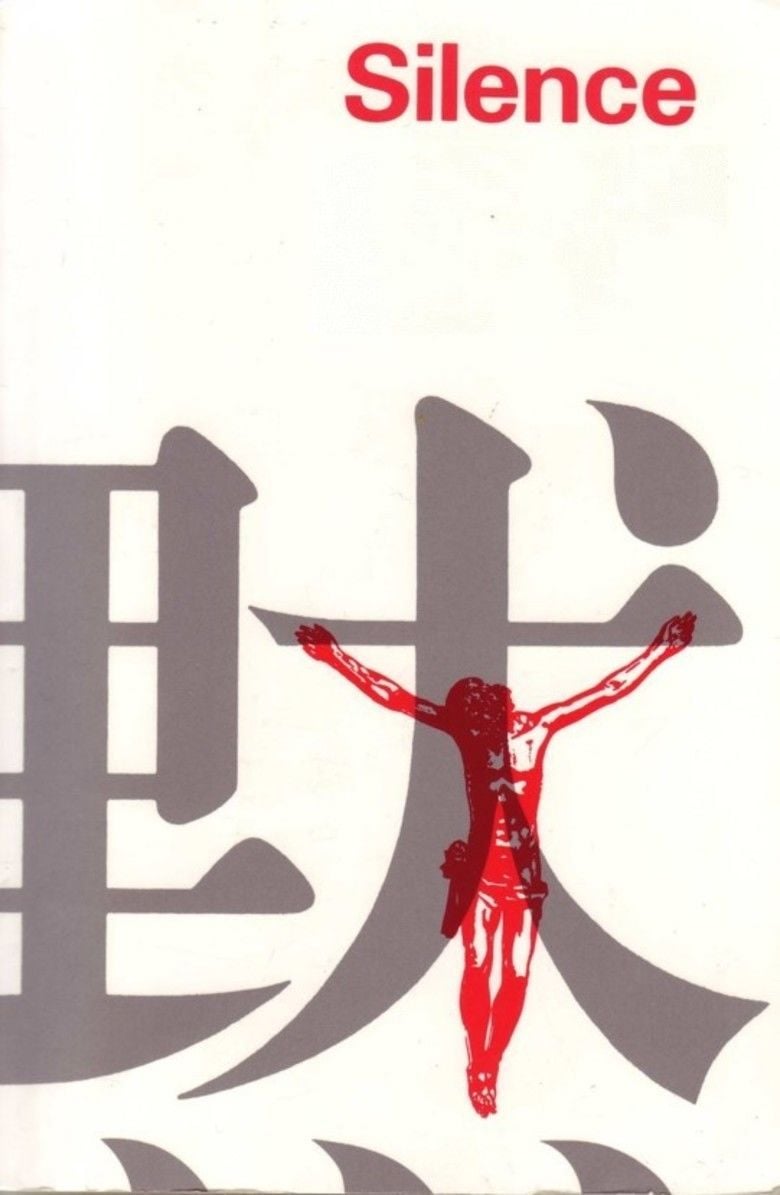 | ||||||||||||||||||||||||||||||||||
Release date 2016 (2016) Based on Silence by Shusaku Endo Production companies Emmett/Furla/Oasis Films, Cappa/DeFina Productions Cast (Father Francisco Garupe), (Father Cristóvão Ferreira), (Father Rodrigues), (Father Valignano), (Interpreter), Shin'ya Tsukamoto (Mokichi)Similar movies 47 Ronin , Black Rain , Kekko Kamen Royale , 3 Days to Kill , Rising Sun , Seven Samurai | ||||||||||||||||||||||||||||||||||
Silence trailer 2016
Silence is a 2016 historical period drama film directed by Martin Scorsese and written by Jay Cocks and Scorsese, based on the 1966 novel of the same name by Shūsaku Endō. Set in Nagasaki, Japan, the film was shot entirely in Taiwan around Taipei. The film stars Andrew Garfield, Adam Driver, Liam Neeson, Tadanobu Asano and Ciarán Hinds. The plot follows two 17th-century Jesuit priests who travel from Portugal to Edo-era Japan to locate their missing mentor and spread Catholic Christianity. The story is set in the time when it was common for Christians to hide from persecution following the suppression of Japanese Roman Catholics during the Shimabara Rebellion (1637–1638) against the Tokugawa shogunate.
Contents
- Silence trailer 2016
- Silence official trailer 2016 paramount pictures
- Plot
- Cast
- Development
- Legal claims
- Writing
- Casting
- Filming
- Music
- Release
- Home media
- Box office
- Critical response
- Industry reception
- Analysis
- References

The pre-production phase of the filmmaking for Silence went through a cycle of over two decades of set-backs and reassessments. After filming of The Wolf of Wall Street concluded in January 2013, Scorsese refused to follow it up with any film other than Silence. On April 19, 2013, Scorsese indicated that he would begin production on Silence in 2014. Irwin Winkler was then announced as a producer, as were Randall Emmett and George Furla, who would provide financing through their company Emmett/Furla Films. Soon thereafter, planning was made for the film to be shot in Taiwan.

A long-time passion project for Scorsese, which he had developed for over 25 years, the film premiered in Rome on November 29, 2016, and was released in the United States on December 23, 2016. The American Film Institute selected Silence as one of its ten Movies of the Year. The film also received an Academy Award nomination for Best Cinematography at the 89th Academy Awards. Silence is the third of Scorsese's three films about religious figures struggling with challenges to faith, following The Last Temptation of Christ and Kundun.
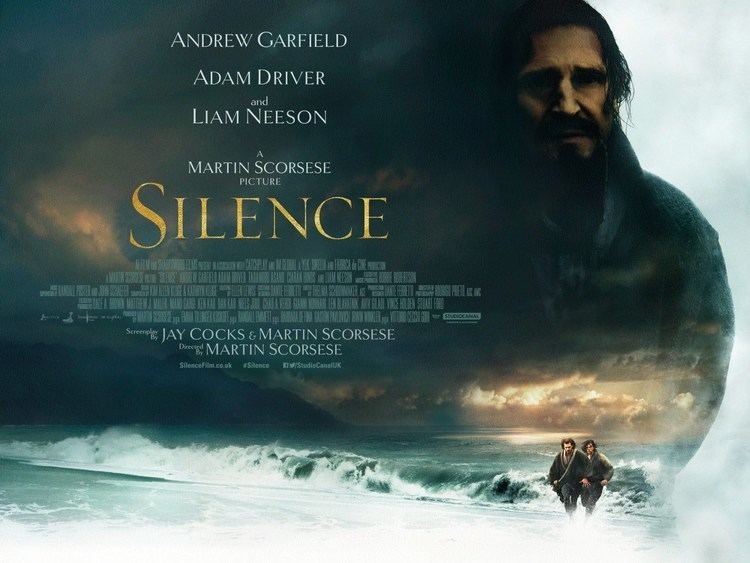
Silence official trailer 2016 paramount pictures
Plot
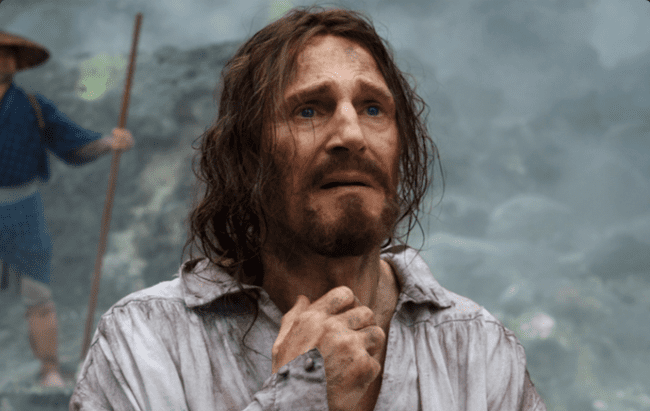
The film begins with a prologue of the young Portuguese Jesuit priest Cristóvão Ferreira witnessing the mortal torture of Japanese converts he has been trying to bring to the Christian faith. The priest appears to be helpless in the presence of Japanese authorities conducting the torture to try to assist his converts in any way.
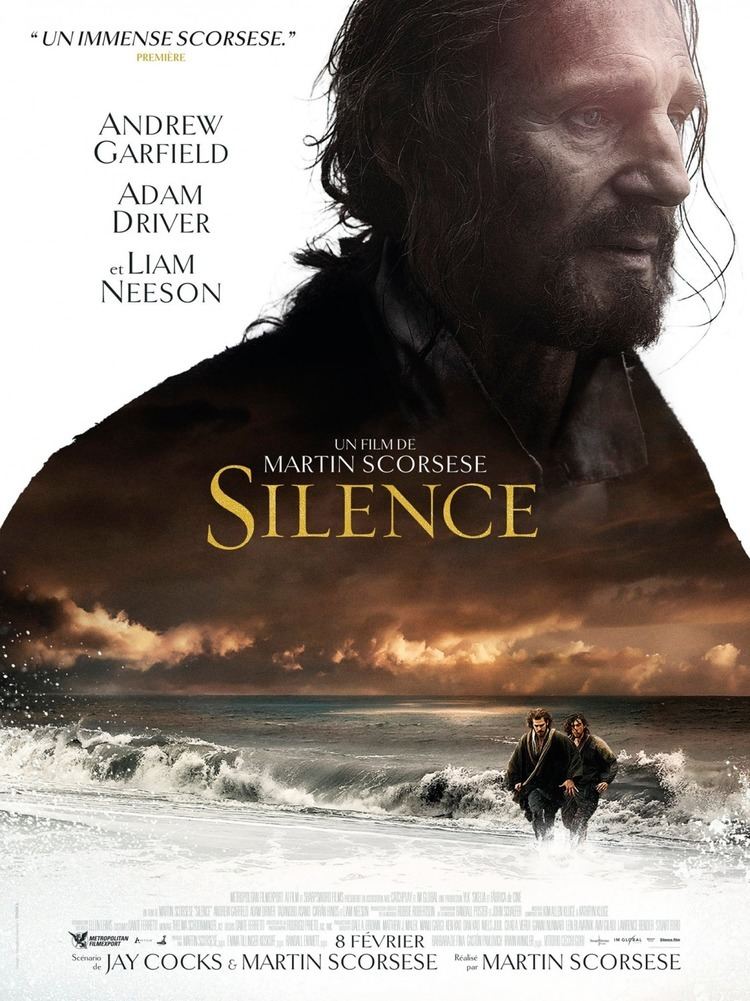
A few years later, at St. Paul's College, Macau, an Italian Jesuit priest, Alessandro Valignano, receives news that Ferreira renounced his faith (apostasy) in Japan after being tortured. In disbelief, Ferreira's Portuguese pupils, Jesuit priests Sebastião Rodrigues and Francisco Garupe, set off to find him. Kichijiro, an alcoholic fisherman who fled Japan to save himself, agrees to guide them.
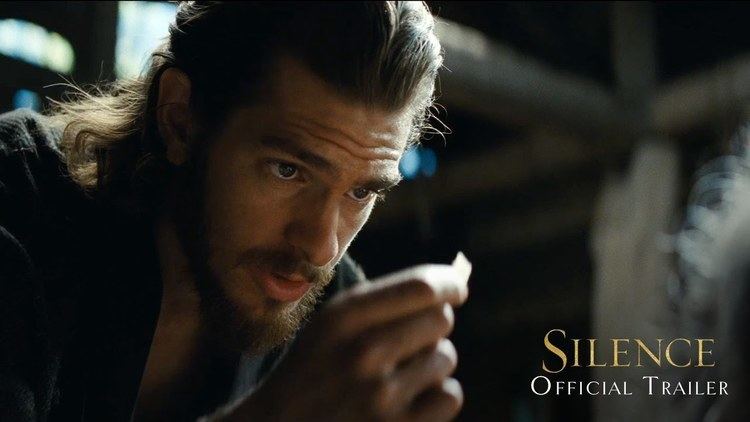
Arriving in Japan at the village of Tomogi, the priests are dismayed to find local Christian populations driven underground. Both priests are then shocked when a samurai searching for suspected Christians, whom the villagers refer to as the "Inquisitor", straps some of the villagers to wooden crosses by the ocean shore, where the tide eventually drowns them. The bodies are then cremated on a funeral pyre which the priests understand is done to prevent a Christian burial.
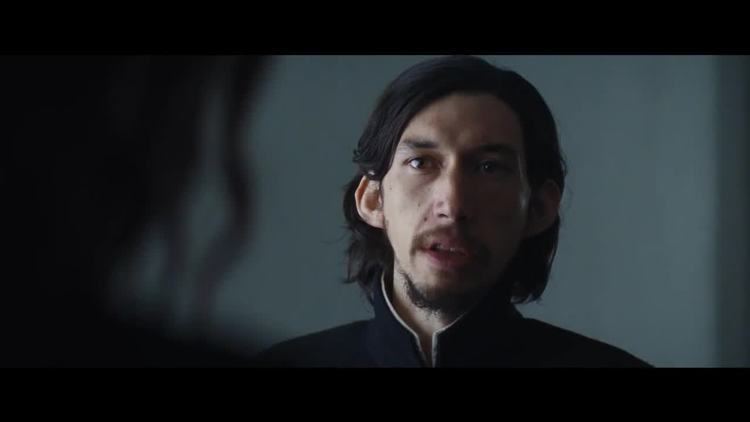
Garupe leaves for Hirado Island, believing that their presence forces the shogunate to terrorize the village. Rodrigues goes to Gotō Island, the last place Ferreira lived, and finds it destroyed. Wandering around Gotō, he struggles over whether it is self-centered to refuse to recant when doing so will end others' suffering. He eventually reunites with Kichijiro, who betrays him into the hands of the samurai. An old samurai, who had earlier accompanied the "Inquisitor" to Tomogi, tells Rodrigues that other captured Christians will suffer unless he renounces his faith.
Rodrigues is taken to Nagasaki, where he is imprisoned with many Japanese converts. At a tribunal, he is told Catholic doctrine is anathema to Japan. Rodrigues demands to see governor Inoue Masashige, who he learns, to his dismay, is the old man seated before him in charge of the proceedings. Rodrigues is returned to prison, and Kichijiro soon arrives to be imprisoned as well. He explains to Rodrigues that court officials threatened him in order that he betray Rodrigues. Kichijiro then says he is a Christian and asks to be absolved of his betrayal through a confession, which Rodrigues reluctantly grants him. He later is released after being told to step on a fumi-e (a crudely carved crucifix), an act symbolizing rejection of the faith. Later, Rodrigues is brought under guard to the shoreline to await someone. In the far distance, he witnesses an emaciated Garupe and three other prisoners approaching on the shoreline under separate guard. Still in the distance, the three other prisoners are taken offshore on a small boat and are about to be drowned from the boat one-by-one as an inducement to get Garupe to renounce his faith. Rodrigues is restrained by guards on shore as he watches Garupe refuse to apostatize. He then sees the desperate Garupe drowned next to the other three prisoners when he attempts to swim offshore trying to rescue the last prisoner from being drowned.
After some time, Rodrigues is eventually taken to meet an older Ferreira. Ferreira says he committed apostasy while being tortured, and states that after 15 years in the country and a year in the temple, he believes Christianity is futile in Japan. Rodrigues repudiates him, but Ferreira is implacable. That night in his prison cell, Rodrigues hears five Christians being tortured. Ferreira tells him that they have already apostatized; it is his apostasy the Japanese demand. As Rodrigues looks upon a fumi-e, he hears an inner voice of Christ giving him permission to step on it, and he does.
Years later, after Ferreira has died, Kichijiro asks Rodrigues to absolve him again, but Rodrigues refuses, saying he is no longer a priest. Kichijiro later is caught with a pouch he claims to have won while gambling containing a religious amulet which he disclaims as being his own. He is taken away and never heard from again. Many years later, Rodrigues dies. He is placed in a large round wooden casket, and his body is cremated. In his hand is the tiny crudely-made crucifix that was given to him when he first came to Japan.
Cast
Development
In an interview with America Magazine in December 2016, Scorsese stated that he first read Shūsaku Endō's novel in 1989 when he was invited by Akira Kurosawa to Japan to act in the lead role of one of the vignettes in Kurosawa's film Dreams. Scorsese described in the interview how he read the novel while traveling between airports and hotels in Japan when he was being filmed acting the part of Vincent Van Gogh in Kurosawa's film.
Silence is considered a "passion project" of Scorsese's and has been in development since 1990, two years after the release of Scorsese's most controversial film, The Last Temptation of Christ, which also carried strongly religious themes. Scorsese first read the novel in 1989 and obtained the movie rights soon afterwards. When asked why he retained interest in the project for over 26 years, Scorsese stated: "As you get older, ideas go and come. Questions, answers, loss of the answer again and more questions, and this is what really interests me. Yes, the cinema and the people in my life and my family are most important, but ultimately as you get older, there's got to be more... Silence is just something that I'm drawn to in that way. It's been an obsession, it has to be done... it's a strong, wonderful true story, a thriller in a way, but it deals with those questions."
In 2009, with the production beginning to coalesce, Scorsese and a production crew went to Nagasaki, Japan, visiting the original sites that served as the setting for Endō's novel. Additional location scouting was conducted in Canada. However, Silence entered a state of development hell soon afterwards, and Scorsese decided to work on Shutter Island and Hugo instead. In December 2011, Scorsese stated that Silence would be his next film. By March, although he originally put it on the back burner and consequently dropped out, Scorsese signed back on to The Wolf of Wall Street and opted to direct it ahead of Silence. However, at the time, Scorsese's publicist stated that Silence would come first. In May, the film picked up another producer in the recently revived Cecchi Gori Pictures, which placed the project first on its slate of upcoming films. Cecchi Gori was involved in pre-production for Silence, but years of unrelated legal disputes had interrupted its association to the film.
After filming of The Wolf of Wall Street concluded in January 2013, Scorsese refused to follow it up with any film other than Silence. On April 19, 2013, it was announced that Scorsese would begin production on Silence in 2014, after a reputed 23-year wait. Irwin Winkler was announced as a producer the same day, as were Randall Emmett and George Furla, who would finance the production through their company Emmett/Furla Films. Paul Breuls' Corsan Films was also reportedly funding the project. Additionally, it was announced that the film would be shot in Taiwan.
Producer Irwin Winkler stated the choice to film in Taiwan was due to lower costs. "[The movie] was very, very expensive, and it was budgeted, because it takes place in 1670 in Japan. We got lucky and found out about Taipei, and in and around Taipei and Taiwan, we found great, great locations. The prices were very cheap, and we were able to make it for a price." Winkler disclosed that the tight budget forced many of the cast and crew, including himself, to work for minimum pay: "And all the actors, Liam Neeson, Adam Driver, everybody worked for scale. Marty worked for scale, I worked for under scale. We gave back money." James Martin, a Jesuit priest and published Catholic scholar, worked closely with the filmmakers to ensure an accurate portrayal of the Jesuits.
Legal claims
Scorsese's complex filmmaking commitments to multiple film projects resulted in an early legal challenge before filming of Silence could be initiated. In August 2012, Cecchi Gori Pictures sued Scorsese over an alleged breach of contract agreements related to Silence. According to the company, in 1990 Scorsese signed a written agreement to direct Silence. Scorsese was supposed to shoot the film following 1997's Kundun, and Cecchi Gori Pictures had apparently invested more than $750,000 for this purpose. However, Scorsese chose to make Bringing Out the Dead, Gangs of New York, and The Aviator first.
In 2004, Scorsese purportedly signed deals to postpone the film further in order to direct The Departed and Shutter Island. In 2011, Scorsese ostensibly agreed to one more deal, delaying Silence to direct Hugo. Cecchi Gori Pictures asserted that Scorsese agreed to pay "substantial compensation and other valuable benefits" in order to first direct The Departed, Shutter Island, and Hugo. The company said the fees were "$1 million to $1.5 million per film plus up to 20 percent of Scorsese's backend compensation." The complaint was centered around the company's allegation that Scorsese failed to pay the fees agreed upon for Hugo, and that he breached the contract's terms by filming The Wolf of Wall Street ahead of Silence. Scorsese, via his representatives, responded, "The claims asserted are completely contradicted by, inconsistent with, and contrary to the express terms of an agreement entered into by the parties last year." He also denounced the lawsuit as a "media stunt" and a "meritless action." The lawsuit was settled on January 17, 2014. The terms of the settlement are sealed.
Writing
This film marks the second adaptation of Shūsaku Endō's novel, which was previously adapted by Masahiro Shinoda into the 1971 film of the same name. Scorsese penned the initial screenplay in 1991 with co-writer and longtime collaborator Jay Cocks. However, they were unsatisfied with the script and conducted rewrites for an additional 15 years. Later, Endō's official translator, Van C. Gessel, who has translated eight of his novels, assisted as a consultant on the film. The screenplay as finally filmed was assessed in critical review as an accurate depiction of the novel as written by Endo. Religious historian Haruko Nawata Ward has indicated that the inclusion of the small crucifix in the deceased priest's hand at the end of the film was an auteur decision made by Scorsese not included in Endo's original book.
Casting
Beginning in 2009 and into 2010, Daniel Day-Lewis, Benicio del Toro, and Gael García Bernal were in negotiations to star. In 2011, the film officially lost the involvement of Day-Lewis, del Toro, and García Bernal. In May 2013, Andrew Garfield and Ken Watanabe joined the cast with Watanabe as the priests' translator replaced by Tadanobu Asano in January 2015 due to scheduling conflicts. In January 2014, Adam Driver and Liam Neeson joined the film, with Driver as Francisco Garupe, the second Jesuit priest, and Neeson as the priests' mentor, Cristóvão Ferreira.
Filming
In January 2012, Scorsese discussed the possibility of utilizing 3D, reconsidered later. By February 2014, Scorsese had begun scouting locations in Taiwan, with filming set for the summer, and eventually pushed back to early 2015. Principal photography took place in Taiwan from January 30 – May 15, 2015.
On January 28, 2015, the production experienced an accident at Taiwan's CMPC Studios. According to a spokesperson for the film, a tragic incident occurred in one of the backlots of the production when a ceiling collapsed which resulted in the death of one contracted employee and the injury of two others.
Music
The music for the film was composed by Kim Allen Kluge, the former music director at Quad City Symphony Orchestra, and Kathryn Kluge. Much of the soundtrack includes ambient nocturnal and ocean sounds repeated over several of the tracks. A 51-minute soundtrack of 25 tracks was released on February 17, 2017 by the recording studio for Rhino Warner Classics under ASIN release number B01N7S3IB9. An extended track of 12 minutes titled "Meditation" is included as the leading track on the soundtrack release.
Release
Scorsese brokered several distribution deals when he attended the 2013 Cannes Film Festival. In July 2014, Paramount Pictures acquired distribution rights for the United States and optimistically eyed a late 2015 release. Discussing the film in March 2016, Winkler revealed the film was in the editing process and that the film would release "at the end of the year," confirming a 2016 release date. In August 2016, Scorsese stated the film would be completed in October, and the 2016 release of the film depended on Paramount. Paramount Pictures released the first trailer for the film on November 22, 2016.
The world premiere of the film was held at the Pontifical Oriental Institute in Rome on November 29, followed by a special screening the next day in Vatican City. It received a limited release (in four theaters) on December 23, 2016 in order to qualify for 2017 Oscar nominations, which expanded to 1580 theaters on January 20.
Home media
The DVD release of the film was set for March 28, 2017, with an slightly earlier release date of March 14, 2017 set for digital streaming of the film.
Box office
Silence grossed $7.1 million in the United States and Canada and $16.6 million in other territories for a worldwide total of $23.7 million, against a production budget of $50 million.
In North America, the film had its expansion alongside the openings of Monster Trucks, The Bye Bye Man and Sleepless, as well as the wide expansions of Live by Night and Patriots Day, and was expected to gross $4–6 million from 747 theaters in its four-day MLK opening weekend. It ended up debuting to $1.9 million (a four-day total of $2.3 million), finishing 15th at the box office. Deadline.com attributed the film's low opening to its 161-minute runtime and lack of major award nominations to create buzz.
Similarly, The Hollywood Reporter noted that, unlike some of the other films released, Silence was playing in fewer cinemas and had been released at a time when the marketplace had "too many adult dramas" and "a lack of interest in the subject matter".
Critical response
On review aggregator website Rotten Tomatoes, the film has an approval rating of 85% based on 220 reviews, and an average rating of 7.6/10. The site's critical consensus reads, "Silence ends Martin Scorsese's decades-long creative quest with a thoughtful, emotionally resonant look at spirituality and human nature that stands among the director's finest works." On Metacritic, which assigns a normalized rating, the film has a score of 79 out of 100, based on 48 critics, indicating "generally favorable reviews".
Matt Zoller Seitz of RogerEbert.com gave the film four out of four stars, stating that, "Silence is a monumental work, and a punishing one. It puts you through hell with no promise of enlightenment, only a set of questions and propositions, sensations and experiences... This is not the sort of film you 'like' or 'don't like.' It's a film that you experience and then live with." Richard Roeper awarded the film four out of four stars, saying, "When Ferreira finally appears and we learn the truth about where he's been all this time, it further serves Scorsese's central theme about the conflict between adhering to one's sacred vows and traditional beliefs and doing the right thing, the prudent thing, the moral thing, on a very pragmatic level."
Several reviewers such as Justin Chang and Mark Kermode emphasized Scorsese's collaboration with his production crew and with his actors as contributing to the film's quality. Writing for the Los Angeles Times, Justin Chang called the film an "anguished masterwork" for Scorsese stating: "Working with such sterling past collaborators as editor Thelma Schoonmaker, production designer Dante Ferretti and cinematographer Rodrigo Prieto, Scorsese has done more than resurrect a vision of feudal Japan... Silence feels less like a feat of adaptation than an act of artistic submission". Mark Kermode writing for The Guardian indicated exemplary performances by the range of Japanese supporting actors in the cast stating: "The real stars however, are the Japanese cast, from Yōsuke Kubozuka’s enigmatic wretch, Kichijiro... to Yoshi Oida’s devout elder Ichizo, to whose village these priests bring both salvation and suffering. As a smiling, silver-tongued interpreter, Tadanobu Asano is a superb foil to the inquisitor, Inoue, played with fly-swatting menace by a wheedling Issey Ogata".
Apart from the narrative qualities of the film, the filmmaking was also praised for the depth and thoroughness of its thematic content. Peter Travers of Rolling Stone, who assigned it 3½ stars out of four, wrote that Silence "offers frustratingly few answers but all the right questions" and argued that it is among the director's "most spiritually moving films to date". In Slant, Jesse Cataldo argued, "Tapping into the vast pool of vagueness and uncertainty that exists beneath the veneer of a rigid, righteous belief, Scorsese crafts a versatile, multifaceted work that encourages serious reflection and contemplation." Alissa Wilkinson of Vox wrote that Silence "is beautiful, unsettling and one of the finest religious movies ever made". John Ehrett of The Federalist praised the film highly, saying, "Silence is a must-see masterpiece about the paradoxes of faith." Ehrett further added, "Complex yet reverent, Silence explores the meanings and dilemmas of Christian faith, and decisively sets a new benchmark for religious films."
Some reviewers cited the legacy aspects of the film for Scorsese and compared Scorsese to such established directors as Ingmar Bergman. Ty Burr of The Boston Globe said, "The movie's being promoted as the third in the director's unofficial trilogy of faith, after The Last Temptation of Christ (1988) and Kundun (1997), and it feels like a self-conscious masterpiece, a summing-up from a filmmaker who, at 74, may be thinking of his legacy." Joshua Rothkopf of Time Out London gave the film five stars out of five, saying, "Scorsese has hit the rare heights of filmmakers like Ingmar Bergman and Carl Theodor Dreyer, artists who find in religion a battleground that leaves even the strongest in tatters, compromised and broken." Emma Green of The Atlantic gave the film high praise, stating, "This is what makes Scorsese's film so radical and so unlike many movies about religion: It's actually art." Robbie Collin of The Telegraph gave the film five stars out of five, stating, "Scorsese's brutal spiritual epic will scald, and succor, your soul." Collin further added, "It's the kind of work a great filmmaker can only pull off with a lifetime's accrued expertise behind him".
The film also garnered criticism. Writing for Variety, Peter Debruge found major flaws with the film, writing, "Though undeniably gorgeous, it is punishingly long, frequently boring, and woefully unengaging at some of its most critical moments. It is too subdued for Scorsese-philes, too violent for the most devout, and too abstruse for the great many moviegoers who such an expensive undertaking hopes to attract." John Patterson of The Guardian stated in his review, "I fear that Silence expired in the womb during that long gestation period. It is beautiful to look at, but feels inert, humourless and overly devout (to say nothing of over-long; Masahiro Shinoda's 1971 adaptation got Shūsako Endō's 1966 novel on to film using 30 fewer minutes than Scorsese). Perhaps that leap toward the devout is needed to savour it fully–and I found I couldn't make it."
The DVD release met with slightly improved audience ratings over theater release reviews achieving a 4 out of 5 star approval rating from on-line DVD evaluation sites.
Industry reception
Silence received an Academy Award nomination for Best Cinematography at the 89th Academy Awards. In addition to other competitive awards for which the film received accolades, the American Film Institute selected Silence as one of its ten Movies of the Year.
Analysis
Scorsese has stated in interviews that among the most difficult aspects of the film to represent were the spiritual themes presented in Endo's original book used for the film. The first version of the script he attempted to write with his co-writer Jay Cocks only managed to get midway through the material, before being set aside as insufficiently sensitive to the spiritual aspects of the book. It took Scorsese many years to envision a way to approach an accurate and informed filming of the scenes, involving spiritual transitions among the actors in the film.
Caesar A. Montevecchio of the University of Notre Dame published a theological assessment of the spiritual themes in the film concentrating on the act of priestly renunciation depicted towards the end stating: "This climactic scene of Rodrigues trampling the fumie makes clear that Silence is as much about the object of Christian faith as it is the experience of that faith. As ambient and live sound are washed out entirely, Rodrigues hears the voice of Christ telling him to trample, that it was to be trampled upon that Christ came into the world. The object of faith becomes a Christ who is a hero of pity, who takes up the weakness and suffering of humankind as his cross, rather than a hero of triumphant resolve. The Jesus of Silence is one of utter kenosis (self-emptying), and one who in the mercy of that kenosis radically sympathizes with the weakness, and frailty, of human beings, even ones like Judas and Kichijiro."
Aaron Baker in his book A Companion to Martin Scorsese discussed aspects of the theological themes in the film stating that: "According to an analysis of the film by the Japanese-American theologian Fumitaka Masuoka, it pivots on the idea that the silence of God is in fact the message of God, being not the silence of nihil, or 'nothingness', but rather 'the "accompaniment" for the forsaken and the suffering', and the concomitant silence of Christians quietly hoping for salvation. Implicit here is what Matsuoka terms 'an element of uncertainty', a possibility that the nihil of emptiness, meaninglessness, and hopelessness will eventually prevail. Uncertainty about the fate of the soul (or the self, for secularists) lies at the heart of human experience, injecting many a mind with the existential fear, trembling, and sickness unto death of which Søren Kierkegaard vividly wrote."
References
Silence (2016 film) WikipediaSilence (2016 film) themoviedb.org Silence (2016 film) IMDb
